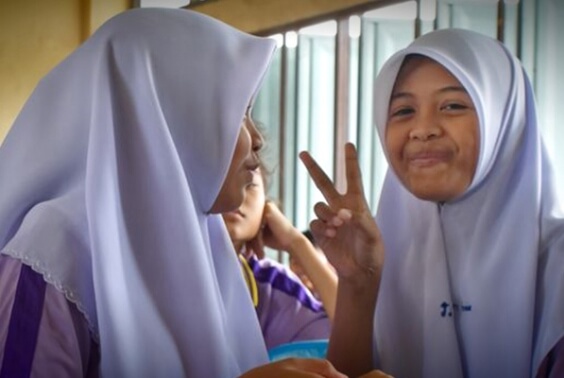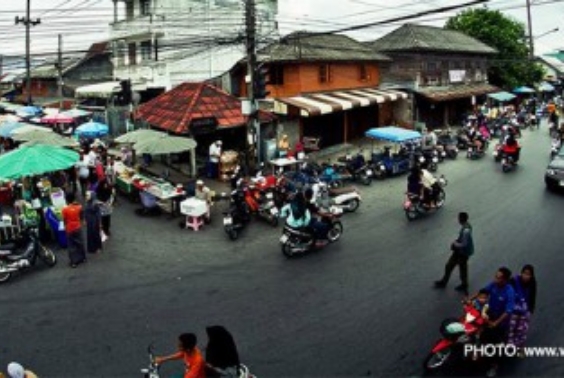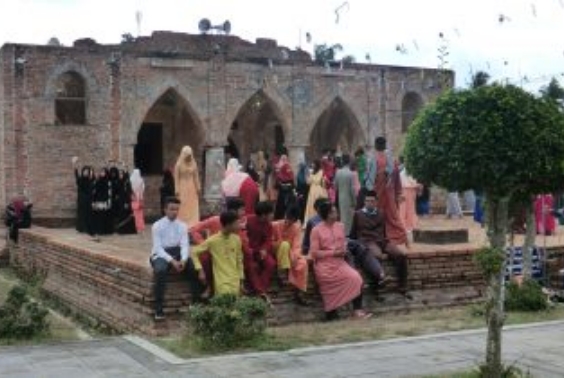- THAILAND'S DEEP SOUTH
The Historical Development of Structural Violence
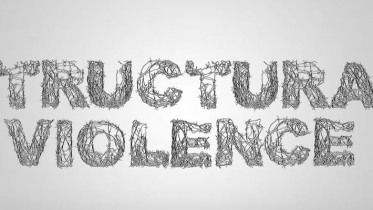
Political and territorial acquisition
The history of the southern border region is 800 years longer than that of Thailand, and during such a long history, this region has experienced several turning points.
Although the southern border region is often associated with Islam, the religions which arrived first were Hindu and Buddhism, the fusion of which with animism developed the region’s culture. Islam started spreading after the beginning of the 15th century when the influence of the Malacca Sultanate was growing. The region then came to be under Islamic rule when the king of Pattani converted to Islam.
Although Thailand repeatedly attempted to invade the southern border region, it was not until 1786 when Thailand’s reign over Pattani became apparent. After this, Thailand’s political influence gradually infiltrated into the southern border region. The main concern of Thailand during this process was the political acquisition of the region.
The southern border region was divided into seven areas in 1816: Pattani, Yala (current Yala Province), Yaring (current Yaring District of Pattani Province), Ra-ngae (current Ra-ngae District of Narathiwat Province), Raman (current Raman District of Yala Province), Sai Buri (current Sai Buri District of Pattani Proinve), and Nong Chik (current Nong Chik of Pattani Province). The system through which Songkhla unified these seven areas was established, which was followed by gradual centralisation of power to Bangkok.
In 1902, Sultanism was abolished, and government officials sent from Bangkok replaced the sultans who ruled the areas in the name of the King of Thailand, which meant the rule of the southern border region by Malay Muslims had come to an end.
Four years later, in 1906, the seven areas were reorganised as Pattani Province, and Thai laws were applied except for laws concerning marriage and inheritance. Since then, ‘Thailandisation’ of judiciary and other systems had been gradually conducted.
It was 1933, the year following the Siamese Revolution of 1932, when the original form of the existing structure was established. As a result of the Chakri Reformation, which aimed at the modernisation of administrative structure and the centralisation of power, the former Pattani Province was put under the control of the Ministry of Interior and reorganised into the current Pattani Province, Yala Province and Narathiwat Province. This meant that the preparation for the current system of governance based on a centralised administrative framework was almost completed.
As for the territorial acquisition, there was a significant influence in the relationship with Britain. In 1826, the Burney Treaty between Thailand and Britain decreed that the territories north of Kedah, Kelantan and Terengganu belonged to Thailand, and the original form of the current national border, which divides the territories of the Pattani Kingdom, was developed by the Anglo-Siamese Treaty of 1909. This led to the completion of the territorial integration of the southern border region into Thailand.
The development of structural violence
The modern history of the border region of Southern Thailand can be seen as the history of the development of structural violence. Violence can be divided into direct violence, which inflicts physical damage on the body/mind/object through means such as bombs and shooting, and structural violence, which inflicts physical and mental damage through the social structure, in such forms as legal and governing systems. It can be argued that what is behind direct violence in the southern border regions is the existence of structural violence.
After the political and territorial acquisition of the southern border region was completed, the main concern of the Thai government shifted to the issue of how to assimilate Malay Muslims into Thailand. The government’s engagement with this issue became notable after the Siamese revolution of 1932.
The Siamese revolution of 1932 was led by the People’s Party, a secret society founded in Paris by seven students, such as Pridi Banomyong, sent from the Ministry of Justice, and Luang Pibulsonggram, sent from the army, who studied in Europe and the United States under a government scholarship. After the success of the revolution which led to a political shift from an absolute monarchy to a constitutional monarchy, the People’s Party government started incorporating the Malay Muslims of the southern border region into the wider Thai population by giving them Thai nationality.
Luang Pibulsonggram, one of the leaders of the Siamese revolution of 1932, promoted the assimilation of Chinese residents and ethnic minorities into Thailand. Once he became the Prime Minister in 1938, he issued the first Cultural Mandate (ratthaniyom) in the following year and changed the name of the country from ‘Siam’ to ‘Thailand’, which meant the ‘nation of Thais’ (although the country’s name was changed back to ‘Siam’ from ‘Thailand’ in 1945, it was changed again to ‘Thailand’ in 1948 after the second administration of Pibulsonggram was inaugurated). He issued 12 mandates between 1939 and 1942, including one that instated Thai as the national language, and attempted to assimilate various ethnic groups in Thailand into Thai ethnicity.
In addition to the Cultural Mandates, a number of measures were taken in order to assimilate Malay Muslims in the southern border region into Thailand. For example, Malay-medium education, literature written in Javi, Malay ethnic costume, and Malay or Arabic surnames were prohibited in an act of 1942. In addition, policies such as those which established that Malay Muslims were to be referred to as Thais and the change of non-working days from Thursday and Friday to Saturday and Sunday were introduced in the same year.
Furthermore, systematisation and institutionalisation of Islam was attempted through various laws and regulations such as the Patronage of Islamic Act of 1945 and its amendment in 1948, the Special Legislation of 1946, the Mosque Act of 1947, and the 1949 Regulation of the Central Isalmic Committee of Thailand. Although the Patronage of Islamic Act of 1945 assigned Chularajmontri the office of giving the patronage of Islam on behalf of the King, the amendment of the act in 1948 lowered the status of Chularajmontri from ‘the representative of the King of Thailand’ to an ‘advisor to the Ministry of Culture’. The Special Legislation of 1946 instated that, with regard to family law and inheritance law, Islamic laws were applied to Malay Muslims in Satun Province and the three provinces in the southern border region. As for the Mosque Act of 1947 and the 1949 Regulation of the Central Isalmic Committee of Thailand, they were introduced with an intention of establishing a centralised framework of the Islamic administration, just like the system of Sangha of Buddhism, by registering the important Mosques of Ummah with the government. The Central Islamic Committee of Thailand, with the king-appointed Chularajmontri as the chair, was established, under which committees of each province and mosque were placed. In addition, every Muslim was assigned to a particular Mosque, and they were also required to register with the Mosque to which they belonged. It needs to be noted that there were other laws and regulations concerning Mosques, such as the Mosque Registration Act of 1948, the 1949 order issued by the Ministry of Interior concerning Mosque activities, and the 1955 amendment of the Mosque Act. All of these laws and regulations aimed at the systematisation and institutionalisation of Islam, with the King of Thailand, who was seen as a Buddhist and a patronage of all the religions, at the top. This is why the centre of Islam in Thailand came to be placed in Bangkok.
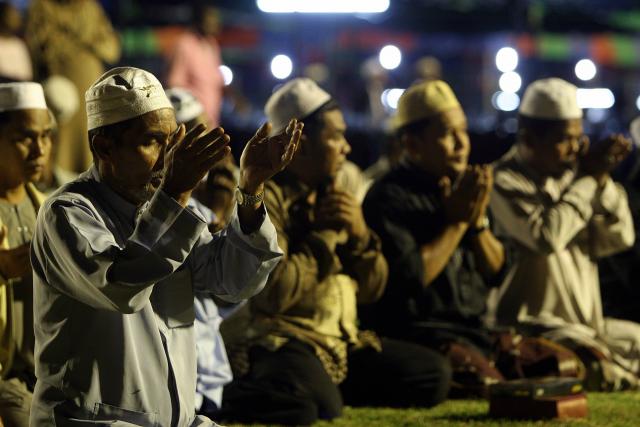
After Sarit Thanarat came to power in 1958, measures and policies concerning Islam such as support for building central mosques in each province in the southern border region (1960-), implementation of social and economic development projects (1961-), priority admission of Muslims to higher education institutions (1971-), and facilitation of mutual understanding between Muslims and Buddhists (1977-) were introduced, which enabled the shift from assimilation to integration.
The government organisation was also restructured as a part of the integration policies. In 1961, an administrative adjustment unit was established within the Department of Local Administration of the Ministry of Interior, and in 1964, the administrative adjustment centre of the southern border region was established in Yala Province. In addition, it was officially and explicitly required for government officials who took a post in the southern border region to understand the doctrines of Islam and the Javi language. In 1981, the administrative adjustment centre of the southern border region was restructured, and the Southern Border Provinces’ Administrative Centre was developed as an integrated organisation that holistically dealt with public security and general administrations of each province. These measures reflected the intention of the Thai government to stifle anti-government sentiment by incorporating Muslims in the southern border region into the administrative organisation, facing anti-government movements which had not shown any signs of disbanding since the end of the Second World War.
Sarit Thanarat vigorously promoted the integration policies within Thailand in order to confront the communisation of the neighbouring countries, using the three national principles (Lak Thai) proposed by Rama VI, namely ‘nation’, ‘religion (Buddhism)’, and ‘king’, as the national policy. As a part of this policy, the three principals were incorporated into the public education system, which promoted the development of the Thai national identity. At the same time, as a part of ethnic integration policies, ‘Pono’ (traditional Islamic educational institutions) was outlawed, and the establishment of new Pono was also banned. In addition to this, the southern border region was designated as an ‘educational priority region’ for the purpose of spreading the public education system (since the use of Malay in the public education system was prohibited, classes were taught in Thai, and Islamic education had not been approved until 1976).
The aforementioned assimilation and integration policies came to suppress the society and culture of Malay Muslims, which gradually developed into structural violence. In recent years, martial law and the emergency decree, as forms of structural violence, have been exercising an overwhelming influence on Malay Muslims. There is no doubt that these policies and policy practitioners fuel Malay Muslims’ anti-government sentiment, which leads to direct violence in the region.
A new turning point?
The agreement between NSC chief Paradorn Pattanatabut and BRN negotiator Hassan Taib on opening peace talks, which was signed on 28 February 2013, brought a new turning point to the history of the southern border region. The credibility of this dialogue, at first, tended to be questioned because, for example, it was not clear whether Hassan Taib was a real BRN representative and it was also doubtful whether the dialogue could have an impact on anti-government armed groups. However, as the dialogue proceeded, doubts turned into hope. Nobody would deny that peacemaking processes require a long period of time – it starts from peace talks which develop into peace negotiations, and if successful, a peace agreement is achieved, and finally, peace-building is conducted in accordance with the mutual agreement. Nevertheless, many people hope that the peace talks will be a turning point for the resolution of conflicts in the southern border region, which started more than two centuries ago. The three effects of opening peace talks, which have emerged along with growing expectations, are discussed below.
The first effect is that people who used to restrain themselves from publicly expressing their views for fear of the security forces or vengeance from anti-government armed groups have gradually started voicing their thoughts. Of course, people had been showing their views in places. One such example is the Tak Bai incident, in which people held a protest against the arrest of Malay Muslims who were suspected of having a connection with anti-government armed forces, appealing for their release in front of a police station in Tak Bai. However, people’s expressions of their views tended to be confined only to temporal herd behaviour since there was an atmosphere in which even if they voiced their views or took action, it would anyway be suppressed (by those in power). This atmosphere fuelled anti-government sentiment among direct and indirect victims of the incident, which drove some young people to insurgency. Peace talks have brought some changes and gradually produced an atmosphere in which people can speak publicly about what they think. The main agents who contributed to the production of such an atmosphere were citizens’ groups which have intensified their activities given the opening of peace talks.

This dramatic intensification of the activities of citizens’ groups is the second effect of opening peace talks. The news that the Thai government and BRN officially opened peace talks, with Malaysia as a facilitator, increased support and funding from foreign governments, private organisations, and international organisations to citizens’ groups. Taking this opportunity, a number of groups have intensified their activities and cooperated with each other, led by citizens’ groups that had been working on peacemaking in the region for a long period of time. Since peace talks were opened, citizens’ groups have submitted documents that specified their requirements several times. Given that these requirements have had an influence on direct actors of the peace talks, it can be said that the role of citizens’ groups in peacemaking has rapidly become more important.
The last effect of opening peace talks is changes seen in the actions of the Thai government. What should be particularly noted is that after the peace talks started, there has been a move towards the dismantlement of structural violence. One example of this is changes in language policies. A part of structural violence that developed after the Siamese revolution of 1932 was restriction on the use of the Malay language and Javi scripts. However, SBPAC promoted and implemented the use of three languages (Javi, Thai, and English) in public institutions and the Malay-community radio broadcast in order to redress the suppression of Malay Muslim identities. Although martial law and the emergency decree, which were introduced given the intensification of conflicts, have not yet been lifted, it can be said that the biggest effect of opening peace talks is the move towards dismantling structural violence.
Will the dismantlement of structural violence go further?
Since the agreement on the Ramadan ceasefire ended in failure, the peace dialogue has started losing its speed. Furthermore, the peace talks have completely stopped since the beginning of 2014, partly because of the political confusion and disharmony within the anti-government armed groups. Although it was thought, given the dramatic agreement on opening peace talks last year, that the southern border region had reached a new threshold, peacemaking by the Thai government and the anti-government armed groups, which are the direct actors of this issue, is at a standstill because of the suspension of the peace talks. On the other hand, citizens’ groups, which are indirect actors of the peace talks, have been actively working on peacemaking even under these circumstances.
What does ‘peace’ mean to people in the southern border region? It might mean ‘fairness and justice’ for some people. It could be ‘autonomy’ for some others. Or, some people might think ‘peace’ is ‘independence’. In addition, it is possible that the same person has different definitions of ‘peace’ depending on contexts and situations. If I state my opinion without fearing the possibility of causing misunderstandings, ‘peace’ for the people in this region probably means that fairness and justice are evident to them and that they can have daily lives without being made conscious of being Malay Muslims, Buddhist Thais, or Chinese. The concepts of ‘negative peace’ and ‘positive peace’ proposed by Johan Galtung, a Norwegian scholar of Peace Studies, have often been cited as a definition of ‘peace’ in the context of ‘peace building’. While ‘negative peace’ refers to the state in which direct violence does not exist, ‘positive peace’ refers to the state in which structural violence does not exist.
In the southern border region, direct violence has been exercised as a chain reaction to the development of structural violence. With this perspective, it can be said that violent incidents will not decrease or disappear, and hence peace will not be achieved, unless structural violence is dismantled.
The first step on the journey to peace is to incorporate, in concrete terms, the dismantlement of structural violence in peace talks, peace negotiations, and peace agreement documents. In addition, autonomy and the decentralisation of power are also ways of dismantling structural violence. However, even if a certain form of autonomy could be achieved in future, a long period of time is needed until this happens. What can be done until then is to aim for positive peace and dismantle structural violence, albeit not rapidly, in order to gradually build peace within the southern border region. The role of citizens and citizens’ groups will be even more important to achieve this goal.

Associate Prof. Dr. Gothom Arya is currently an advisor to the Institute of Human Rights and Peace Studies, Mahidol University. He is a reputable scholar and peace activist who, since 2004, has been very active in transforming various conflicts in Thai society, including the Southern Unrest.




